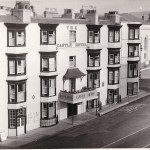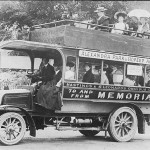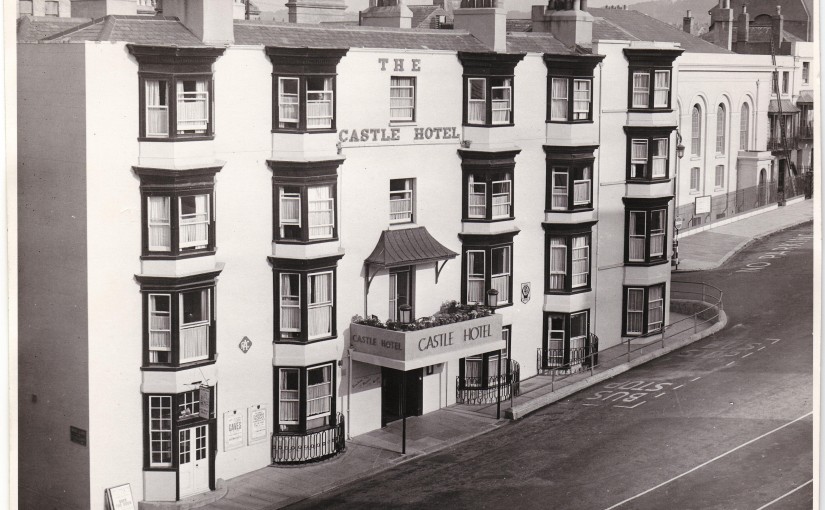By John Hodges
When all that lay beyond the Castle Cliff was open country and the White Rock projected into the sea, the site of Wellington Square was then known as the Priory Field. The Priory Farm and the Brook Field stood on the banks of the small stream that flowed down from the Hop Gardens and Osier beds that are now Brook Field The whole area was one of outstanding natural beauty and the inhabitants of the old town of Hastings took full advantage of this fact when they planned their excursions and picnics. However, this sylvan scene was not to remain forever, and certainly by the middle of the 18th century chalk was being imported from Beachy Head for the purpose of Lime Burning in Kilns that stood on the Priory Field.


When in 1815 this land was purchased from Edward Milward by the firm of Thomas Breeds, Farncombe, Bokett Breeds, and Wenham speculative bankers, rich deposits of brick earth were discovered; the final ingredient that was needed to promote the idea of a new town development. It is interesting to note that this firm of bankers were also the owners of the lime kilns that were originally sited on the opposite side of what we know today as Wellington Square. At about this time Thomas Emary was keeping the Chequers Inn at Battle and it would have been obvious to him from his position on the coaching route the tremendous amount of visitors seeking accommodation in the as yet, undeveloped Hastings. In true pioneering spirit, obviously tempered with some foresight, he built the Castle Inn on a site at the Seaward end of the Priory Field commanding extensive views in all directions. The construction, licensing, and opening of the hotel took place over the period 1816 to 1818, and it is recorded that this new hostelry replaced an ancient thatched cottage on the site, noted for the sale of gin.
The boldness of Thomas Emary’s speculation can only be realised when one appreciates that the nearest dwellings to the Castle Inn at that time were some eighteenth century cottages nestling under the Castle Cliff. There is little doubt, however that the building of the Castle Inn was the Foundation stone of the new Hastings that developed in the Priory Valley. During the construction of the Inn no expense was spared to create a provincial Hotel comparable with any of its day. Coach Houses and stables were built at the rear, a luxurious assembly room was designed to cater for the elegant gatherings of the day and to provide a forum for Public debate. A regular coach service ran from the Inn to London and Dover and the Castle’s own carriage would meet every train when the railway displaced the coach as the mode of transport. Over the years the Emary family have been connected with a number of licensed premises in the immediate area. Among these were some notable hotels, James Emary late of the Castle Hotel held the license at the Royal Albion, and during the 1880s Susan Emary also from that notable establishment became the landlady, but perhaps the most notable of all of these hostelries to come into the hands of the family was the Swan, which was kept by Frances Emary through the period 1815 until 1825. During this period it is interesting to note that the Emary family owned the premier hotels that served both old and new Hastings, it is recorded that they were a family noted for their skills as hotel keepers.
Before the supply of ale was available from the local brewers it would quite probably have been prepared on the premises, with an ample supply of fresh water from a well now covered by the roadway of York Gardens, and Hops in abundance from what is now Alexandra Park and Linton Gardens. There were several bars on the premises one of these was named “Lily’s Bar” after a long serving barmaid a unique accolade, certainly in Hastings. Throughout its existence the hotel remained in the strictest sense, free of tie to any brewer, and certainly in its latter days the point of sale advertising on the beer pump handles merely referred to the respective products as “boys”, “mens”, and “old mens” bitter. Over the years the Castle played host to many visiting dignitaries, not least of all to the countless touring cricket sides who enjoyed the quiet Dickensian hospitality that became a trademark of the Inn. Immediately after the second world war, in the hay day of county cricket when the old Central Ground bore witness to some remarkable cricketing records, none less than Dennis Compton celebrated his part in cricket’s history in this popular hotel.
Sadly in 1968 the end came, when the Castle was demolished to make way for a supermarket and with it went yet another piece of Hastings’ irreplaceable history, brushed aside in the march of “Progress”.
Hastings Town November 2010
All articles, photographs, films and drawings on this web site are World Copyright Protected. No reproduction for publication without prior arrangement. (Hard Copy Back Numbers Still Available) © World Copyright 2015 Cinque Ports Magazines Rye Ltd., Guinea Hall Lodge Sellindge TN25 6EG
